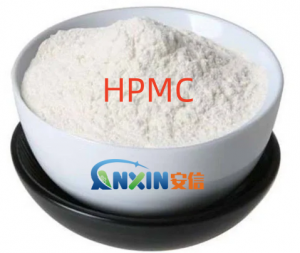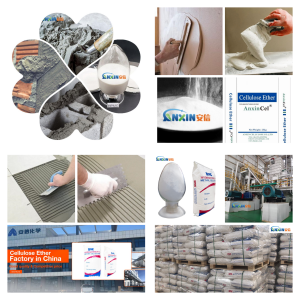Hydroxypropyl methylcellulose (HPMC) is an indispensable polymer additive in modern dry-mix mortar systems. It retains water, thickens the mortar, and improves workability. Properly controlling the HPMC dosage is crucial to the performance of the mortar or adhesive.
1. Main Applications of HPMC
1.1. Tile Adhesives
In tile adhesives, HPMC provides excellent water retention, preventing premature dehydration of the cement and maintaining mortar strength. It also enhances open time and anti-slip properties, ensuring a secure tile bond.
1.2. Wall Putty
Interior and exterior wall putty requires excellent fluidity and water retention. HPMC prevents premature drying and cracking, while enhancing smoothness and workability.
1.3. Self-Leveling Mortar
In self-leveling materials, HPMC is used to adjust fluidity and stability, ensuring even slurry spreading and preventing segregation and bleeding.
1.4. Insulation Mortar and Anti-Crack Mortar
Insulation system mortars require good water retention to prevent strength loss due to water loss. HPMC plays a key role in this type of mortar, improving adhesion and reducing the risk of shrinkage cracking.
2. Typical HPMC Usage in Building Materials
HPMC dosage is generally calculated as a percentage of the total dry mix weight. The typical range is as follows:
2.1. Tile Adhesive:
0.3%-0.5% (i.e., 3-5 kg per ton of dry powder). High-performance tile adhesives may require a higher dosage, up to 0.6%.
2.2. Putty Powder:
0.2%-0.4%. Typically, 2-4 kg per ton is sufficient to meet workability requirements.
2.3. Self-Leveling Mortar:
0.1%-0.2%. Due to the high fluidity requirements, the dosage is lower, but it must be used in conjunction with a dispersant.
2.4. Insulating Mortar/Anti-Crack Mortar:
0.3%-0.5% to ensure adequate water retention and working time.
2.5. Gypsum-Based Products:
0.2%-0.4% to improve application feel and prevent rapid water loss.
3. Factors Affecting HPMC Dosage
3.1. Product Type and Performance Requirements
Different tile adhesive grades (e.g., C1, C2) require different water retention, anti-slip properties, and open time, and therefore require different dosages.
3.2. HPMC Viscosity
At the same dosage, high-viscosity HPMC (e.g., 75,000-100,000 mPa·s) offers better water retention and may require a lower dosage; low-viscosity products require a slightly higher dosage.
3.3. Substrate Water Absorption
Substrates with high water absorption (e.g., aerated blocks) require a higher HPMC dosage to prevent rapid water loss.
3.4. Construction Environment
In hot, dry, or windy environments, the HPMC content can be appropriately increased to prevent rapid water loss in the mortar.
4. The Importance of Proper Addition
Insufficient HPMC addition can result in insufficient water retention, poor workability, and reduced strength; excessive HPMC addition can cause excessively high mortar consistency, slow drying, and increased costs. Therefore, when designing the formulation, experimental adjustments are necessary to determine the optimal dosage based on the construction environment and performance requirements.
The dosage of HPMC in dry-mix mortar for construction typically ranges from 0.1% to 0.5%, with significant variations depending on the application scenario. A scientifically optimized addition ratio not only ensures product performance, but also controls costs, improving construction quality and durability.
Post time: Aug-05-2025








